


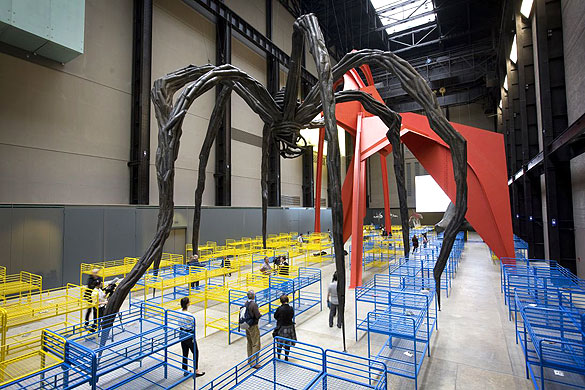












Izzie Klingels is an illustrator with a very distinctive pen and ink style. She influenced by the surreal and fairytales, which I think is very apparent in all her work. I like her work because its simple yet so detailed. From her pen and ink she can create something so complex and attractive, with no need for other materials. My favourite piece of hers is the flowers with rope stems, from a Hans Christian Andersen story "The Wind Tells the Tale of Valdemar Daee and His Daughters". There's no fuss, almost like technical drawings meant for a flower book.
Klingel also makes animations that can be found on http://www.izzieklingels.com/index.php
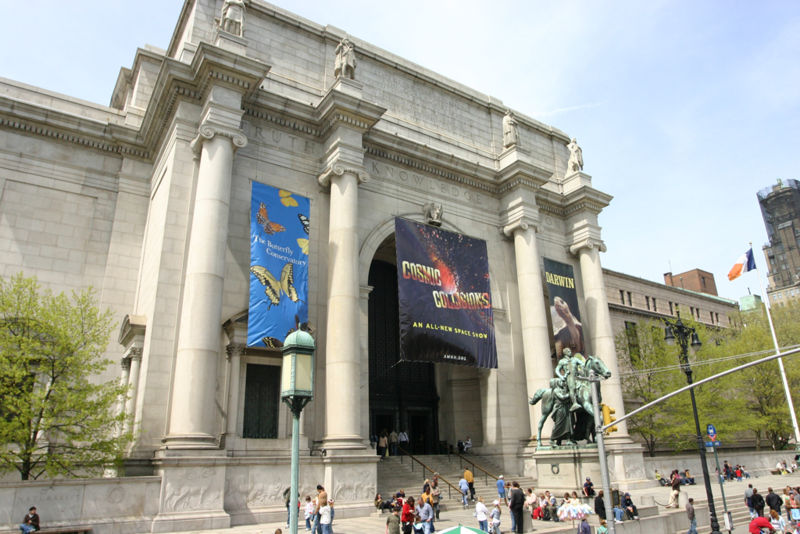
The Museum of Natural History can be found in New York, to the west of central park. It is a huge place, much like the Met. Some might remember it from the film, Night at the Museum. There are many different collections, most notably, The Milstein Hall of Ocean Life, Fossil Halls, and Extreme Mammals which was a temporary display. The latter contained the more obcure mammals, including a cast of the famous Darwinius Masillae, or Ida. This fossil is around 47 million years old, from Germany, and is one of the most complete primate fossils found. Even its stomach contents have been fossilised.
The ocean hall was impressive, with a 94 foot long blue whale hanging from the ceiling. It contains lots of dioramas, filled to the brim with life-like underwater species, and explains each one in great detail. The hall was restored in 2003, and even this year, six years on, it looked like it had only just be finished. The sound of the ocean plays through the speakers, and there is a huge screen playing films of the ocean. A definite must see out of all the collections.
The fossil halls, and in particular the dinosaur halls, are also a must see. Nearly 85% of the fossils on display are real. The Hall of Saurischian Dinosaurs holds the Tyrannosaurus rex (pictured above), and the huge Brontosaurus.
The museum will take a whole day to look around, maybe more, and is well worth a visit. There is something for everyone, and so many different exhibits to choose from that you can't get bored.

The story centres on Walt Kowalski, a war veteran who has just lost his wife. He lives in a neighbourhood in Michigan, mostly occupied by asians. His relationships with his relatives aren't the best, and the patriotism and prejudice he holds against anyone not caucasian isolates him from the community. That is until his next door neighbours befriend him, and he saves Thao, a Hmong teenager, from joining his cousins gang. They form a unique friendship, along with Sue, Thao's sister. But as Thao's cousins gang become more violent, Walt realises he has to do something to save his friends.
This was a great film, I loved Clint Eastwood as Walt. He was grumpy, angry, yet he became endearing, and funny. His relationship with Thao was like father and son, which was strange since he wasn't even close to his own family. He would call his neighbours every rascist word he could think of and they don't even bat an eyelid. This was the last film Clint Eastwood said he would act in, and he gave a fine performance.
 The book is set in the present and the past. Alice from the present is on an archaeological dig when she finds a cave with skeletons in and a ring with a labyrinth on it. This ring turns out to be very valuble and people try to take it from her. In the past, Alais lives in 13th century Carcassonne, France. Her father gives her a book from a set of three that is needed to summon the true grail. Throughout the book we swap back and forth between the two stories, which relate to one another, and come to a head towards the end. It was interesting, it was a bit slow to start with and I must admit it took two attempts to read it! But it is worth a read. Mosse clearly knows a great deal about Carcassonne and its history. It's quite Dan Brown-esque, these fast paced historical novels have become very popular in the past few years, and Labyrinth doesn't disappoint. Her second book Sepulchre runs along the same lines, but is set in the 1800s, so if you like Labyrinth, chances are you will probably like Sepulchre too.
The book is set in the present and the past. Alice from the present is on an archaeological dig when she finds a cave with skeletons in and a ring with a labyrinth on it. This ring turns out to be very valuble and people try to take it from her. In the past, Alais lives in 13th century Carcassonne, France. Her father gives her a book from a set of three that is needed to summon the true grail. Throughout the book we swap back and forth between the two stories, which relate to one another, and come to a head towards the end. It was interesting, it was a bit slow to start with and I must admit it took two attempts to read it! But it is worth a read. Mosse clearly knows a great deal about Carcassonne and its history. It's quite Dan Brown-esque, these fast paced historical novels have become very popular in the past few years, and Labyrinth doesn't disappoint. Her second book Sepulchre runs along the same lines, but is set in the 1800s, so if you like Labyrinth, chances are you will probably like Sepulchre too.

 When I went to New York in June I visited lots of places, including the Empire State Building. This skyscraper is the tallest in New York, and the third tallest in the USA, over a quarter of a mile high. On the 86th floor is the observatory deck, it gives stunning views of Manhattan, and you can even see the Statue of Liberty in the Bay.
When I went to New York in June I visited lots of places, including the Empire State Building. This skyscraper is the tallest in New York, and the third tallest in the USA, over a quarter of a mile high. On the 86th floor is the observatory deck, it gives stunning views of Manhattan, and you can even see the Statue of Liberty in the Bay. The story centres on Heathcliff and Catherine Earnshaw and their turbulent love, set in the Yorkshire Dales.
The story centres on Heathcliff and Catherine Earnshaw and their turbulent love, set in the Yorkshire Dales.





Boone Oakley is an advertising agency with a difference. Their website is actually a series of youtube videos, all linked to one another. I've seen a couple of these before, where people tell a story and you pick what you want to happen. Its different and very clever, and the simple graphic's add to its effectiveness. And the music is amusing. I think you might have to redirect to youtube.com if you want it to work properly.
 I have read a couple of Mark Haddon books, The Curious Incident of the Dog in the Night-Time, which is about a young boy with Asperger's syndrome who finds a dog pitchforked to the ground in his next door neighbours garden, and decides to launch a murder investigation. A highly recommended book.
I have read a couple of Mark Haddon books, The Curious Incident of the Dog in the Night-Time, which is about a young boy with Asperger's syndrome who finds a dog pitchforked to the ground in his next door neighbours garden, and decides to launch a murder investigation. A highly recommended book.
 There was a lot of Andy Warhol, including the soup cans and this Marilyn Monroe print. Golden Marilyn Monroe was painted right after Monroe died, and it has a religious feel about it, due to the golden background and the lone print or Marilyn's head.
There was a lot of Andy Warhol, including the soup cans and this Marilyn Monroe print. Golden Marilyn Monroe was painted right after Monroe died, and it has a religious feel about it, due to the golden background and the lone print or Marilyn's head. This painting by Edward Ruscha made me smile. Oof is a word found in comic books, so its somewhat odd seeing it in big yellow letters on a big canvas. The colours make it striking and its difficult not to notice it. Ruscha said they hold "a certain comedic value" which I definitely agree with, and it makes this strange painting even more appealing.
This painting by Edward Ruscha made me smile. Oof is a word found in comic books, so its somewhat odd seeing it in big yellow letters on a big canvas. The colours make it striking and its difficult not to notice it. Ruscha said they hold "a certain comedic value" which I definitely agree with, and it makes this strange painting even more appealing.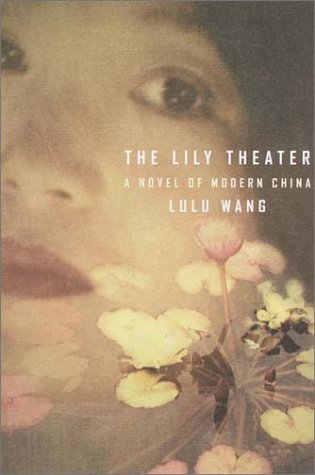 The Lily Theatre is a loosely based on the childhood of the author Lulu Wang.
The Lily Theatre is a loosely based on the childhood of the author Lulu Wang.  American Psycho centres on a man named Patrick Bateman. He is a successful wealthy businessman with the expensive suits, the perfect body, and the cleanest apartment. He looks perfect. Except he has one small flaw. He is a psychopath by night. He lures his victims to his house and then brutally murders them, with an axe, a chainsaw, a nail gun, whatever he can get his hands on.
American Psycho centres on a man named Patrick Bateman. He is a successful wealthy businessman with the expensive suits, the perfect body, and the cleanest apartment. He looks perfect. Except he has one small flaw. He is a psychopath by night. He lures his victims to his house and then brutally murders them, with an axe, a chainsaw, a nail gun, whatever he can get his hands on.  Another one of Gaudi’s creations, Parc Guell was originally meant to be a residential area but only two houses were built and no one wanted to buy them. Luckily for us it was transformed into beautiful gardens open to the public. The whole park oozes Gaudi, from the colourful mosaics to the smooth curves of the architecture. It is on the side of a very large hill so there are lots of steps and hills to walk up, which adds to its beauty, and has amazing views of Barcelona.
Another one of Gaudi’s creations, Parc Guell was originally meant to be a residential area but only two houses were built and no one wanted to buy them. Luckily for us it was transformed into beautiful gardens open to the public. The whole park oozes Gaudi, from the colourful mosaics to the smooth curves of the architecture. It is on the side of a very large hill so there are lots of steps and hills to walk up, which adds to its beauty, and has amazing views of Barcelona.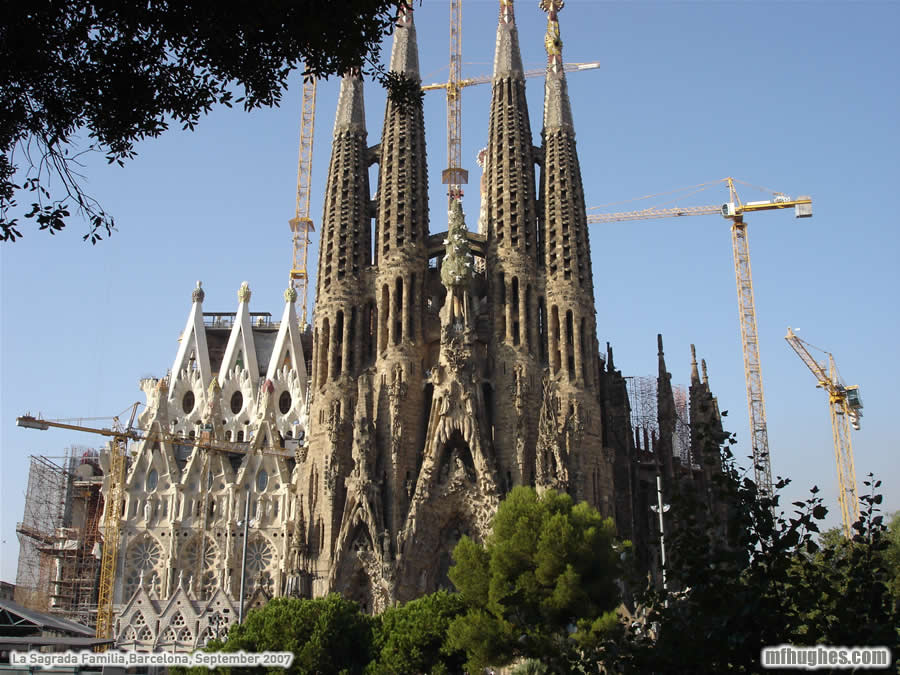 Barcelona is full of amazing architecture, mostly thanks to the late great Antoni Gaudi. His work can be found throughout the city, and are instantly recognisable. What he and Barcelona are most famous for though, is the Sagrada Familia, a church that began construction on 19 March 1882, and is still unfinished today. The church was one of Gaudi’s last buildings before he died.
Barcelona is full of amazing architecture, mostly thanks to the late great Antoni Gaudi. His work can be found throughout the city, and are instantly recognisable. What he and Barcelona are most famous for though, is the Sagrada Familia, a church that began construction on 19 March 1882, and is still unfinished today. The church was one of Gaudi’s last buildings before he died. The building is huge, and there has been so much effort and detail gone into the workmanship that there is no wonder it hasn’t been completed yet. There are a total of 18 towers, 2 connected by a bridge and very steep spiral staircases! There are three facades, the Nativity facade, Passion facade, and the Glory facade which is still incomplete. Each one has its own style, the Nativity facade is extremely detailed, depicting the birth of Jesus. This was the first facade to be built whilst Gaudi was alive. The Passion facade is on the opposite side to the Nativity facade, and is dedicated to the passion, death and resurrection of Jesus. The Glory facade faces the south-east and is the main facade.
The building is huge, and there has been so much effort and detail gone into the workmanship that there is no wonder it hasn’t been completed yet. There are a total of 18 towers, 2 connected by a bridge and very steep spiral staircases! There are three facades, the Nativity facade, Passion facade, and the Glory facade which is still incomplete. Each one has its own style, the Nativity facade is extremely detailed, depicting the birth of Jesus. This was the first facade to be built whilst Gaudi was alive. The Passion facade is on the opposite side to the Nativity facade, and is dedicated to the passion, death and resurrection of Jesus. The Glory facade faces the south-east and is the main facade. The interior is just as awe-inspiring and impressive as the exterior. There are huge columns that appear to grow into the ceiling. Gaudi wanted the columns to look like trees, and that exactly what they made me think of when I first saw them. The stain glass windows look modern and fit right in with the architecture.
The interior is just as awe-inspiring and impressive as the exterior. There are huge columns that appear to grow into the ceiling. Gaudi wanted the columns to look like trees, and that exactly what they made me think of when I first saw them. The stain glass windows look modern and fit right in with the architecture.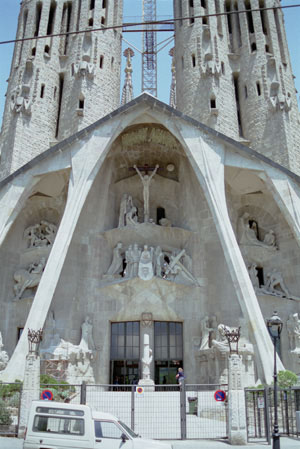 The building is already a landmark for Barcelona, even Spain, and it is yet to be completed. After seeing this and some of his other work when I was in Barcelona, he became one of my favourite architects. Pictures don’t do it justice, and I highly recommend visiting Barcelona just to see his architecture!
The building is already a landmark for Barcelona, even Spain, and it is yet to be completed. After seeing this and some of his other work when I was in Barcelona, he became one of my favourite architects. Pictures don’t do it justice, and I highly recommend visiting Barcelona just to see his architecture! My dad lives in Dubai, so I am lucky enough to go and have a free place to stay! It is one of a kind, everything is extravagant, and shiny and brand new.
My dad lives in Dubai, so I am lucky enough to go and have a free place to stay! It is one of a kind, everything is extravagant, and shiny and brand new. Some of you may know about the Burj Dubai, a skyscraper under construction at the moment. It is in fact the tallest building in the world, rising high into the sky at a colossal 818m. I had the pleasure of seeing it last year and it towers above the other "tiny" skyscrapers. I took the very top picture on my phone which is why its not the best quality, but you can tell from the skyscrapers in the foreground the sheer scale of it. The picture above is a recent image, as you can tell its almost finished.
Some of you may know about the Burj Dubai, a skyscraper under construction at the moment. It is in fact the tallest building in the world, rising high into the sky at a colossal 818m. I had the pleasure of seeing it last year and it towers above the other "tiny" skyscrapers. I took the very top picture on my phone which is why its not the best quality, but you can tell from the skyscrapers in the foreground the sheer scale of it. The picture above is a recent image, as you can tell its almost finished. Another landmark Dubai is known for is the Burj Al Arab. This is a luxury hotel designed to look like a sail on the sea. Its contemporary, and beautiful in its own way. The fact that it is on its own little island in the sea makes it even more striking.
Another landmark Dubai is known for is the Burj Al Arab. This is a luxury hotel designed to look like a sail on the sea. Its contemporary, and beautiful in its own way. The fact that it is on its own little island in the sea makes it even more striking.